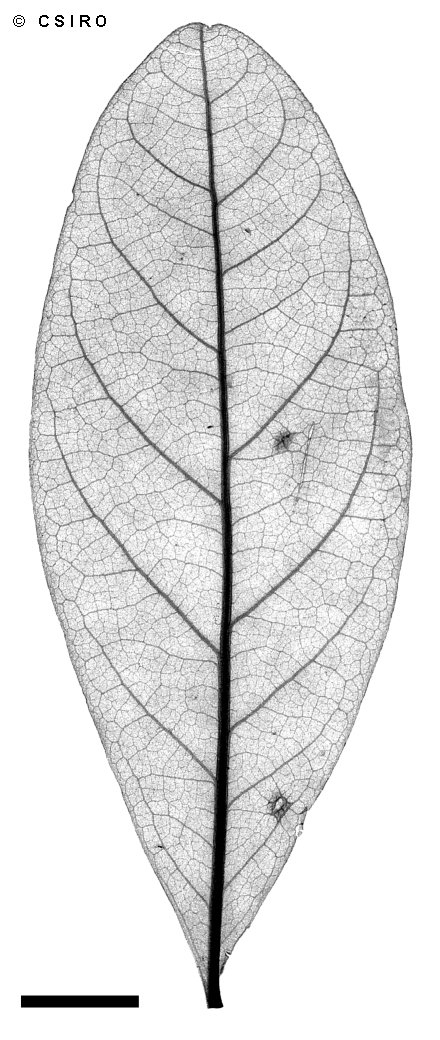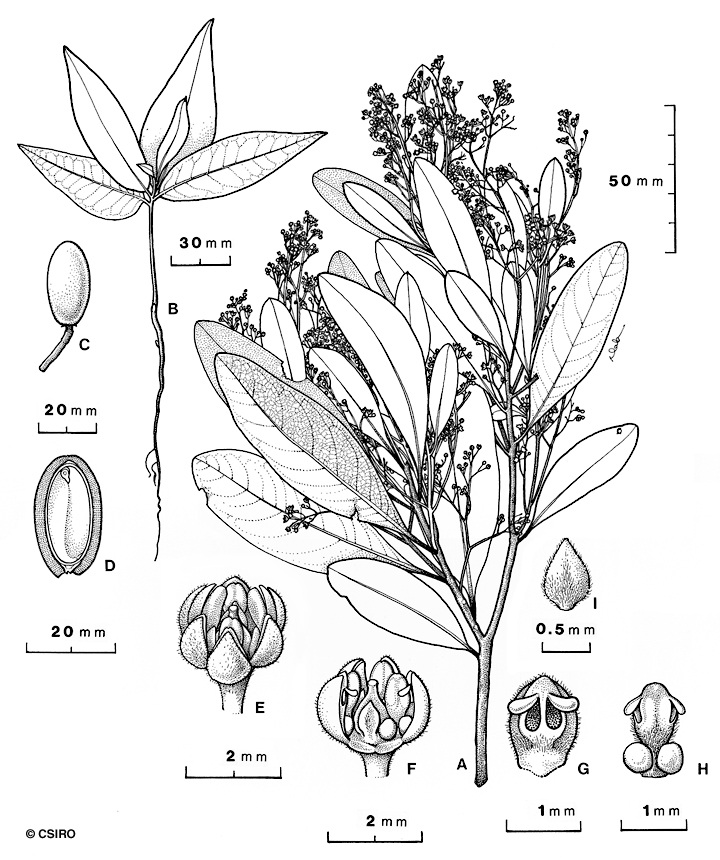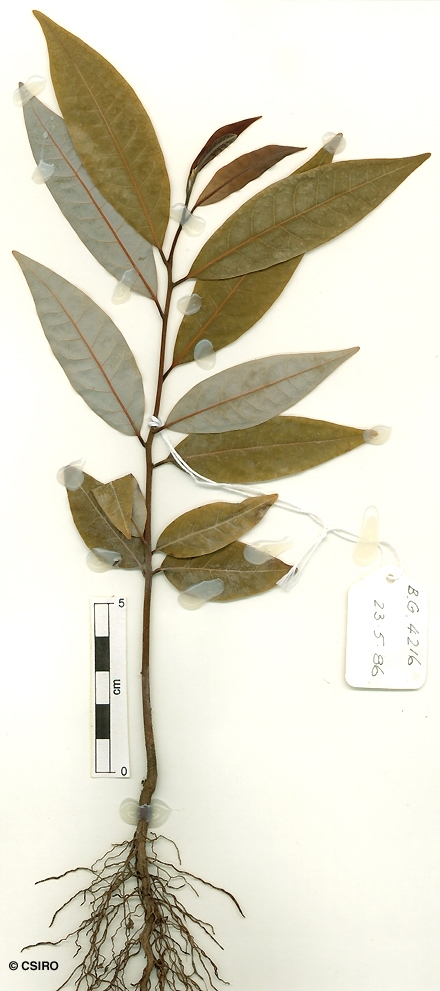Australian Tropical Rainforest Plants - Online edition
Beilschmiedia collina B.Hyland





Hyland, B.P.M. (1989) Australian Systematic Botany 2: 151. Type: B. Hyland 9186: State Forest Reserve 144, 18.xi.1976 (QRS, holotypus).
Walnut, Blush; Blush Walnut; Mountain Blush Walnut
A thin pale brown layer generally visible beneath the subrhytidome layer before the first section of the outer blaze. Blaze darkens substantially on exposure. Gritty inclusions generally apparent in the outer blaze.
Twigs terete or angular in transverse section, clothed in straight, pale brown, appressed hairs when young but almost glabrous when older. Leaf blades about 5-15 x 1.5-4.5 cm, glaucous on the underside, clothed in straight, pale brown, appressed hairs. Midrib raised or flush with the upper surface. Petioles channelled on the upper surface. Oil dots visible with a lens.
Fruits about 20-23 x 12-13 mm. Cotyledons cream.
Fruit eaten by several species of Fruit Pigeons.
This species produces millable logs but they are seldom harvested as this species is not highly regarded in the timber trade. Wood specific gravity 0.90. Hyland (1989).





